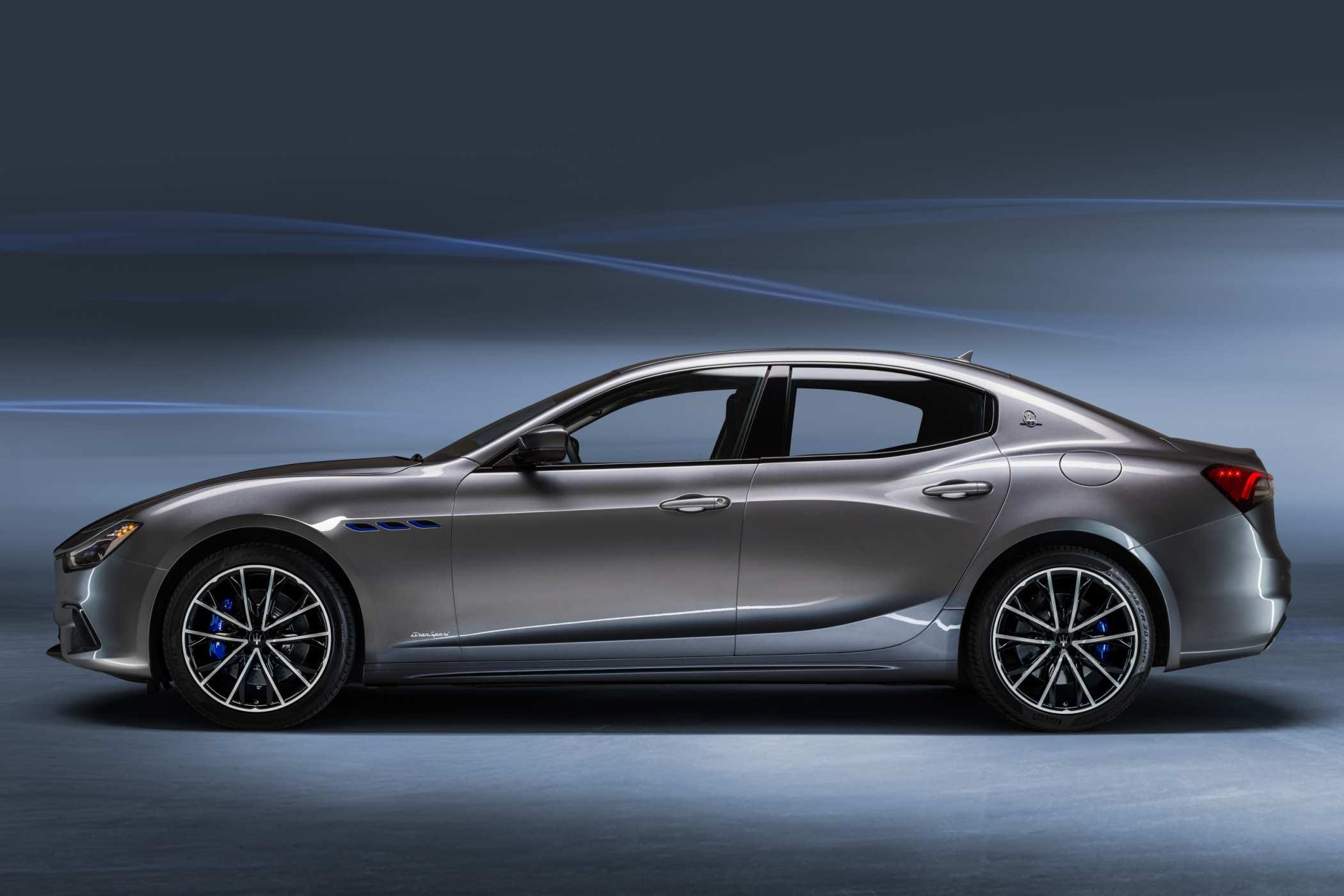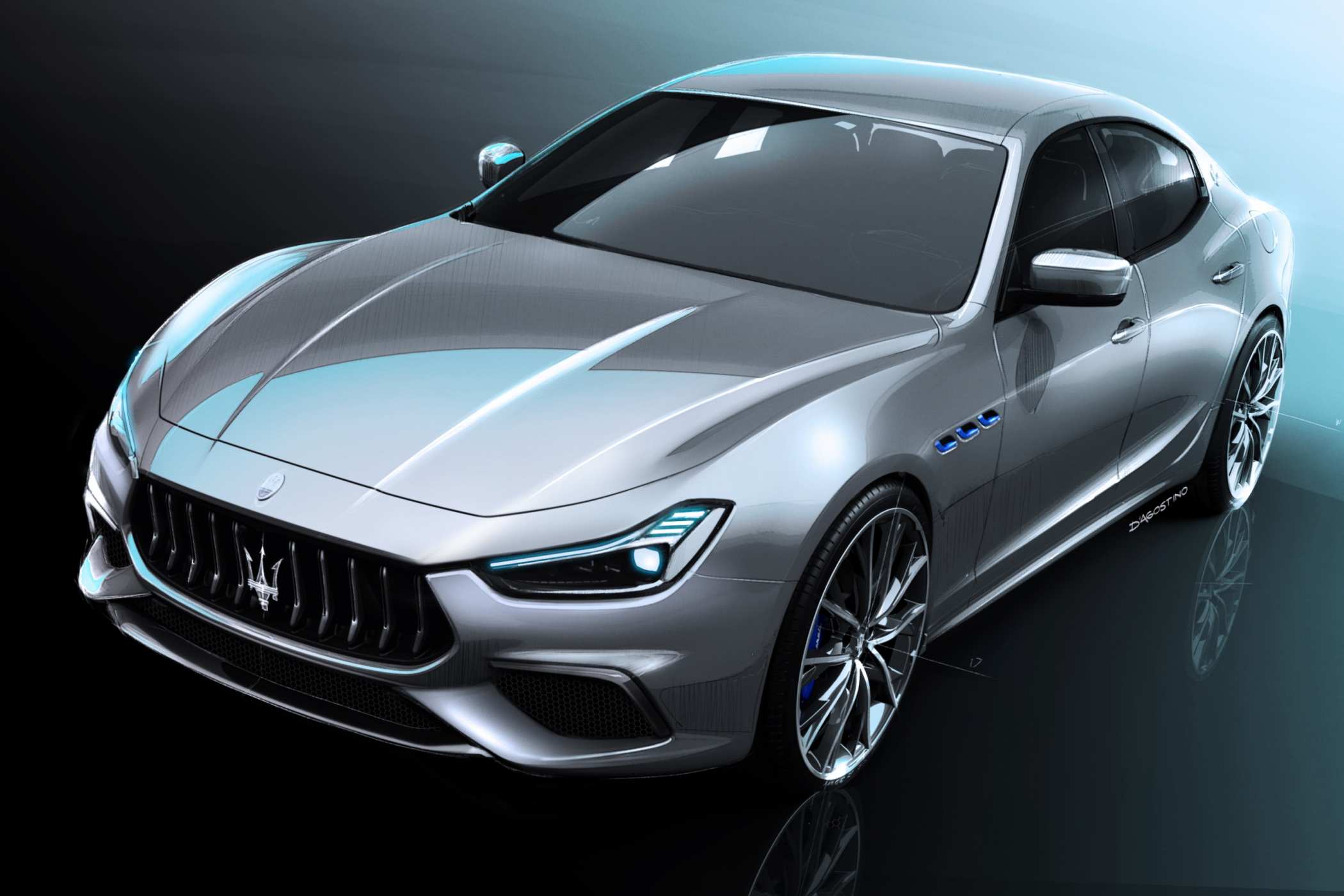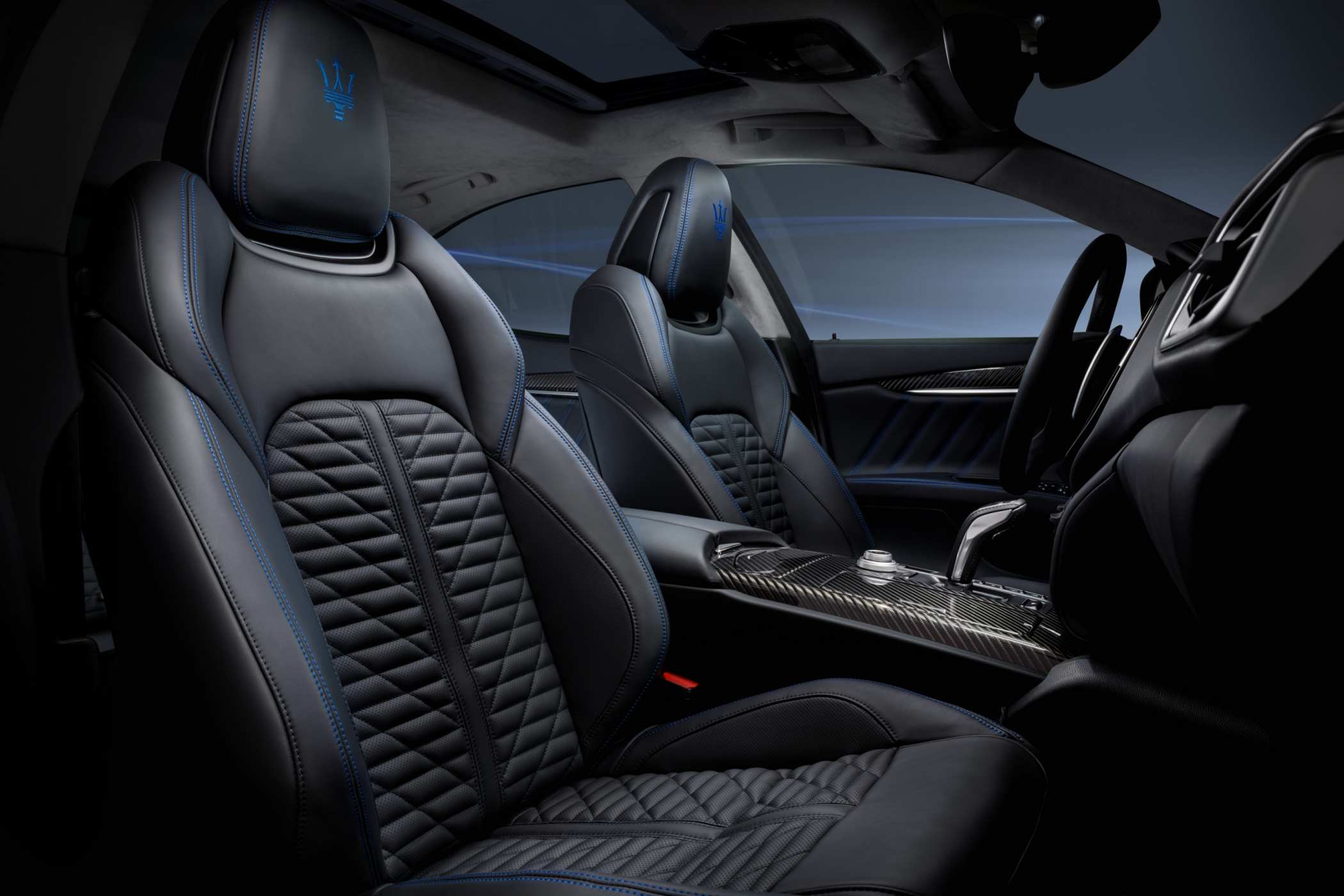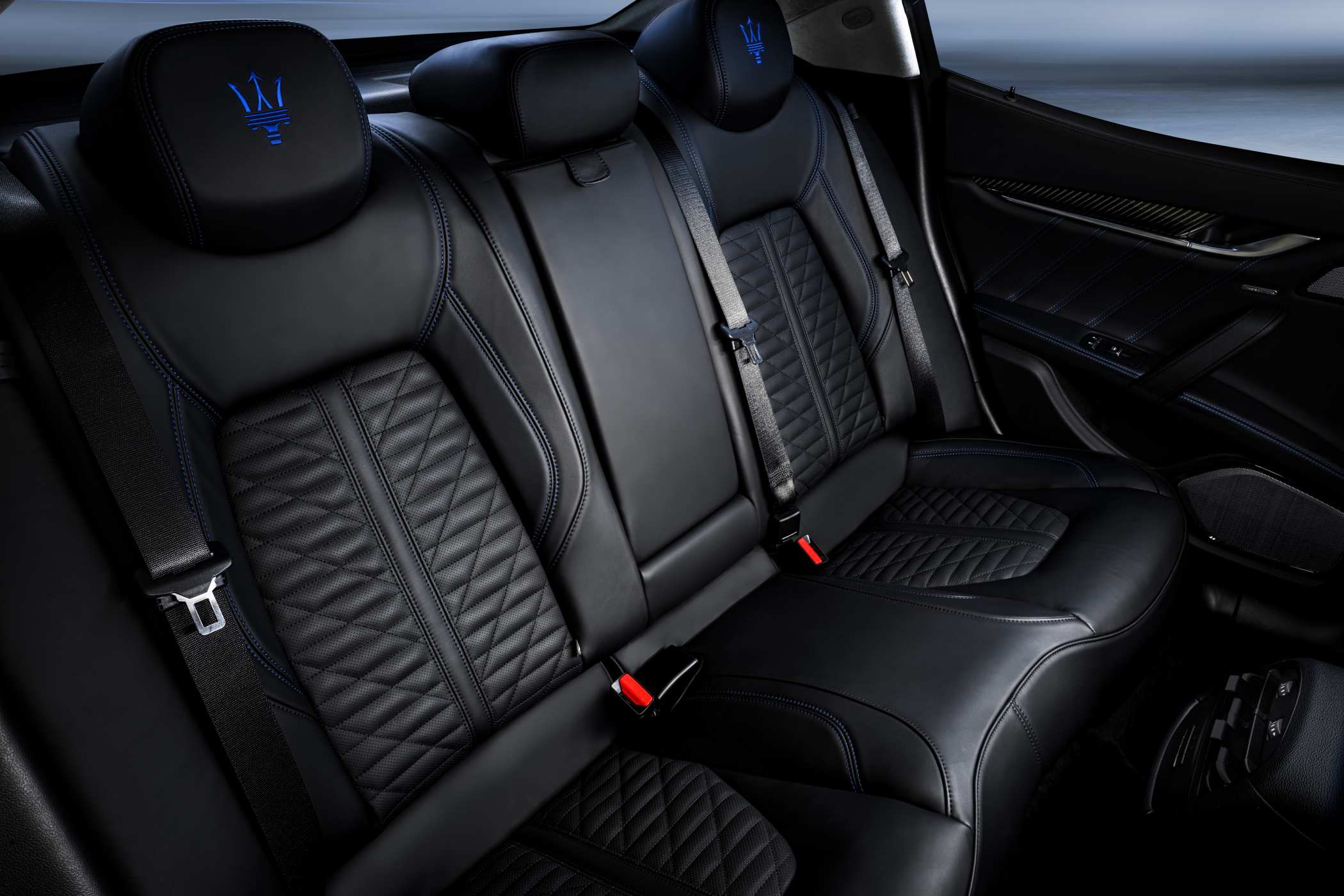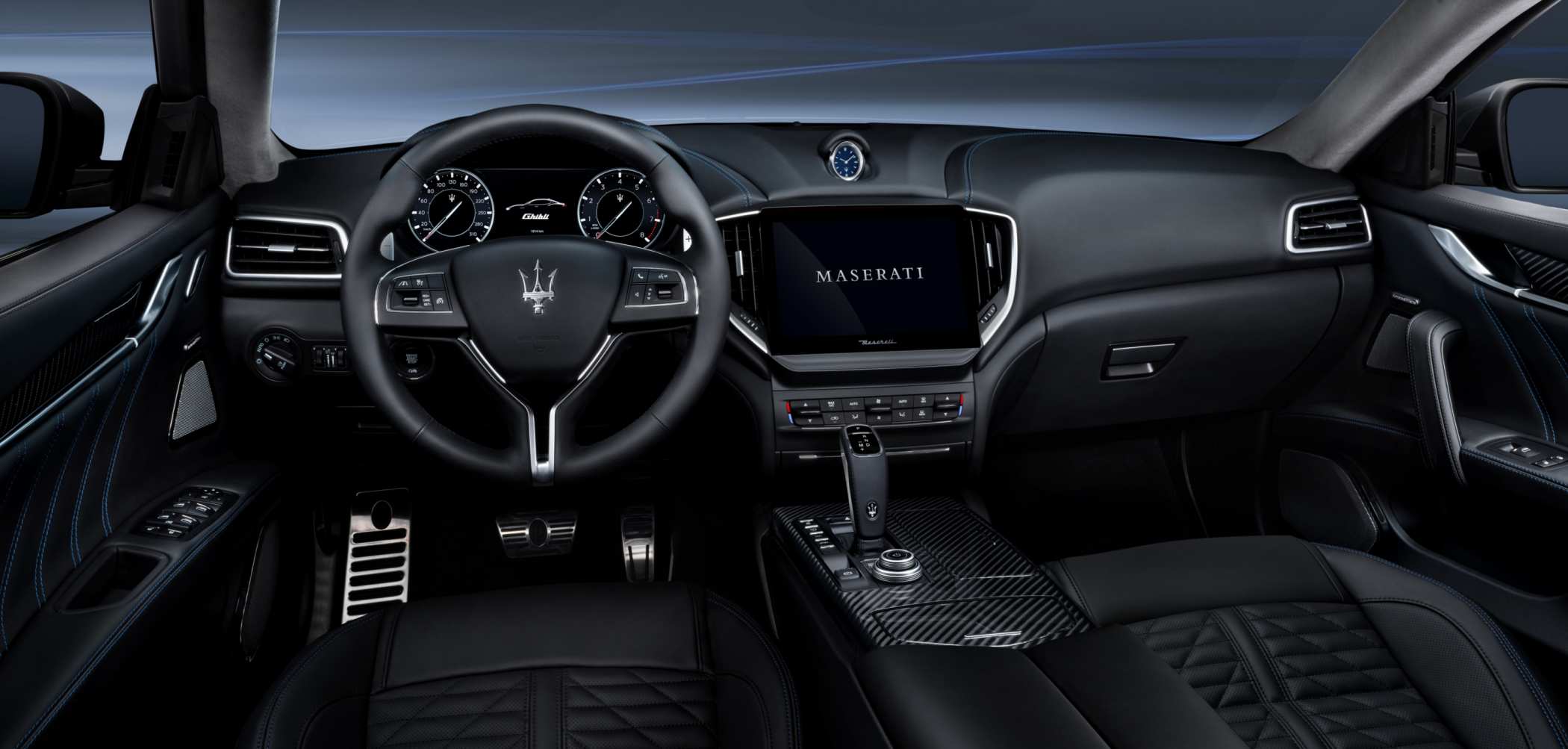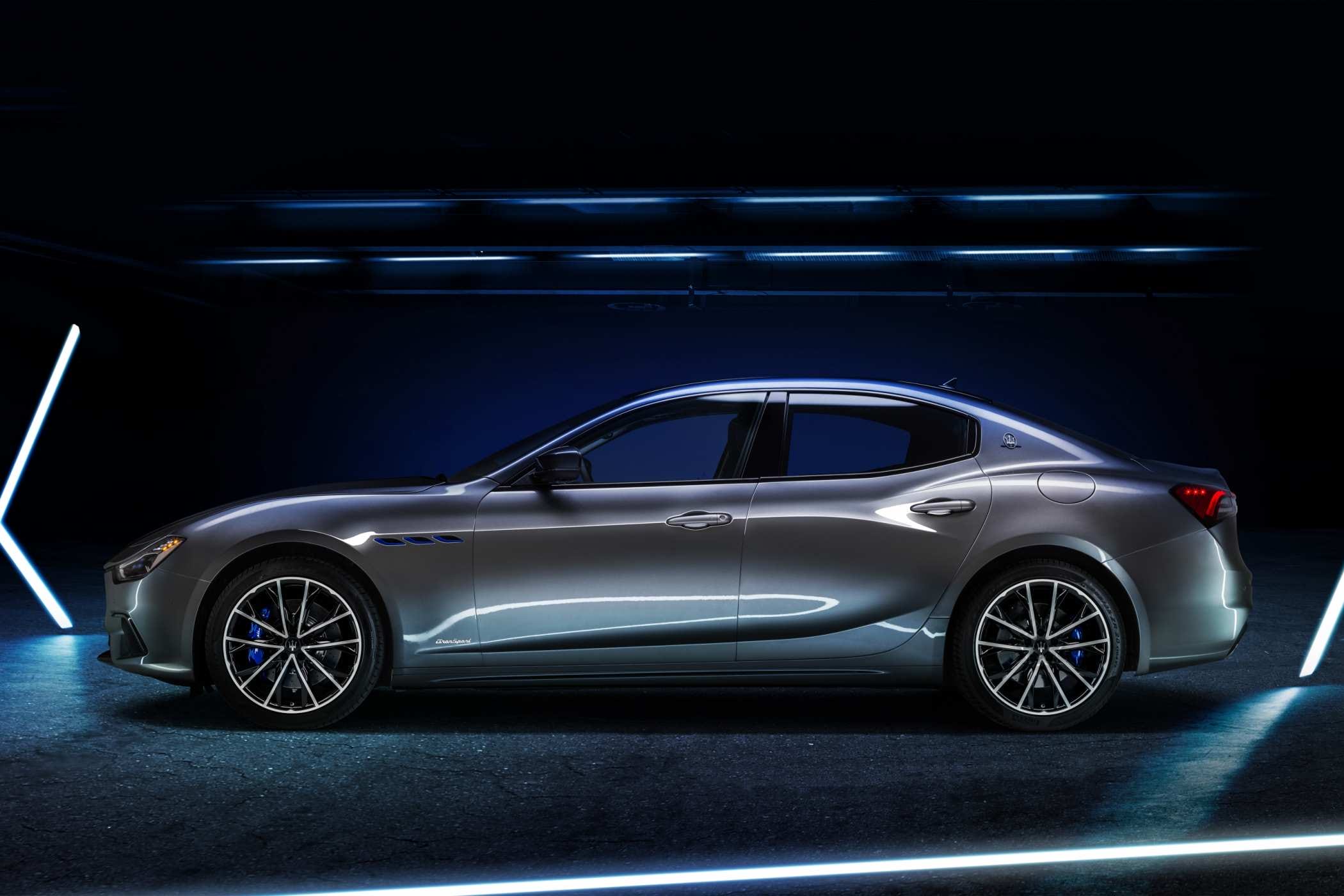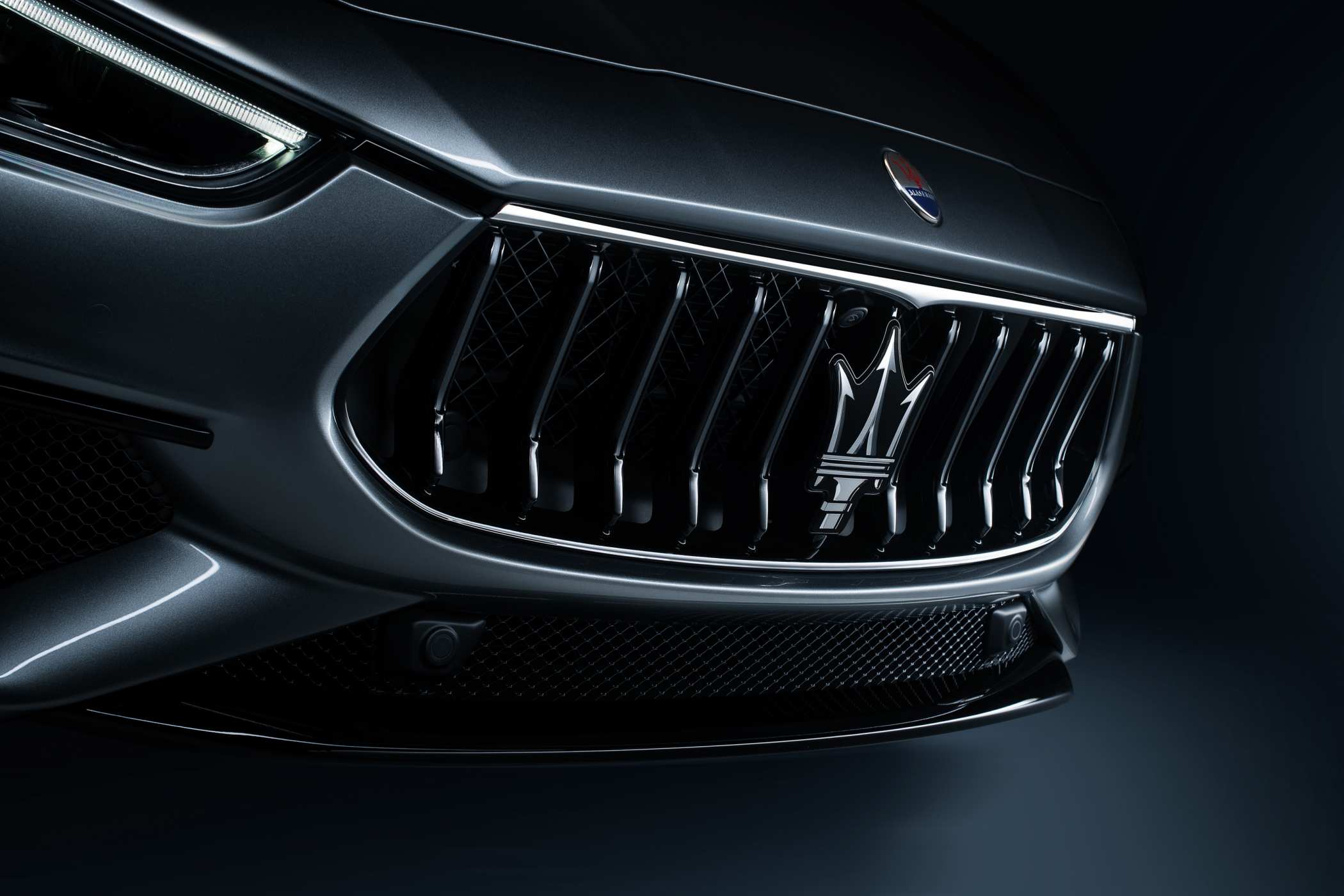 The new Maserati Ghibli Hybrid represents one of the most ambitious projects for Maserati, which after the announcement of the new engine for the MC20 super sports car now sets the seal on another step forward towards the brand’s new Era.
The new Maserati Ghibli Hybrid represents one of the most ambitious projects for Maserati, which after the announcement of the new engine for the MC20 super sports car now sets the seal on another step forward towards the brand’s new Era.
- The first hybrid vehicle in Maserati’s history
- Developed by the Maserati Innovation Lab of Modena
- The vehicle will be produced at the Avvocato Giovanni Agnelli Plant (AGAP) at Grugliasco (Turin) from next September.
The spark of electrification ignites Maserati’s future: with the new Ghibli Hybrid, the Trident Brand enters the world of electrification.
The choice to introduce the hybrid technology on the Ghibli sedan is no coincidence: this model, with over 100,000 units produced since its launch in 2013, perfectly embodies the Modena-based manufacturer’s DNA.
In fact, the challenge facing Maserati was to enter the world of electrification without altering the brand’s core philosophy and values. The result? The creation of the best possible hybrid. What’s more, Ghibli Hybrid will retain the unmistakable sound that has always distinguished every Maserati.
The arrival of the new Ghibli Hybrid thus expands the Maserati range, which is now even more competitive and responsive to the demands of the market.
Ghibli Hybrid Design
Ghibli Hybrid is immediately recognisable, thanks in part to the new design of both exterior and interior. The common denominator of the restyling, developed by the Centro Stile Maserati, is the blue colour, chosen to identify all cars with hybrid technology and the new world they represent.
On the exterior, the blue colour characterises the three iconic side air ducts, the brake calipers and the thunderbolt in the oval that encloses the Trident on the rear pillar. The same blue colour reappears inside the car, in particular on the embroidered seams of the seats. The new Ghibli Hybrid also introduces new stylistic contents, starting from the new front grille, with bars redesigned to represent a tuning fork, a musical device that emits a sound of extreme purity, and which also evokes the Trident symbol itself. There are significant changes at the rear of the car, where the light clusters have been completely restyled, with a boomerang-like profile inspired by the 3200 GT and the Alfieri concept car.
Ghibli Mild Hybrid
In perfect harmony with its DNA, Maserati has chosen a hybrid solution focused primarily on improving performance, while also reducing fuel consumption and cutting emissions.
The hybrid technology exploits kinetic energy the car accumulates when in motion, recovering it and transforming it into electricity during deceleration and braking, and storing it in a battery.
The innovative powertrain, the outcome of in-depth engineering development work by the technicians and engineers of the Maserati Innovation Lab in Modena, combines an internal combustion engine (4 cylinders, turbo, displacement of 2.0 l) with a 48 volt alternator and an additional electric supercharger (e-Booster), supported by a battery. This solution is unique in its segment, and is the first in a new generation of powertrains, with the perfect trade-off between performance, efficiency and driving pleasure.
The battery is mounted in the rear of the car, with benefits in terms of improved weight distribution.
This version weighs about 80kg less than the Diesel.
Thanks to maximum power output of 330hp and torque of 450Nm delivered from just 1,500rpm, the new Ghibli Hybrid’s performance data are very impressive: top speed of 255km/h and acceleration from 0 to 100km/h in 5.7 seconds.
Ghibli Hybrid occupants will still revel in the unmistakable sound that characterises all Maserati models, thanks to the optimised exhaust, which includes specially designed resonators.
The Maserati Intelligent Assistant multimedia system is latest-generation, based on digital inputs from Android Automotive, software that delivers an innovative User Experience fully customisable to the driver’s personal preferences. The multimedia system’s HD screen, with new graphics, more user- friendly and without surrounds, is increased in size from 8”4 to 10”1. A new instrument panel with digital devices and new graphics is also introduced.
Electrification the Maserati way
The new Ghibli Hybrid represents the first step in a plan that will lead to the electrification of all new Maserati models. The Brand’s first all-electric cars will be the new GranTurismo and GranCabrio, scheduled for 2021.
|
TECHNICAL SPECIFICATIONS |
|
|
GHIBLI HYBRID |
|
|
ENGINE |
|
|
Layout |
L4 Mild Hybrid with eBooster and 48V BSG |
|
Displacement (cc) |
1,998 |
|
Bore x stroke (mm) |
84 x 90 |
|
Compression ratio |
9.5:1 |
|
Max. power output |
330 @ 5,750 |
|
(hp @ rpm) |
|
|
Peak torque (Nm @ rpm) |
450 @ 4,000 |
|
Fuel injection |
Gasoline Direct Injection GDI |
|
Injection pressure (bar) |
200 |
|
Induction |
1 mono scroll turbocharger |
|
Crankshaft |
Forged steel |
|
Lubrication |
Variable displacement oil pump |
|
Timing system |
1 chain-drive overhead camshaft with Multiair |
|
PERFORMANCE |
|
|
0-100 Km/h (s) 5.7 |
|
|
Top speed (km/h) 255 |
|
|
Braking distance from 100 to 0 km/h (m) 35.5 |
|
|
FUEL CONSUMPTION AND CO2 EMISSIONS |
|
|
WLTP combined cycle (l/100 km) 8.5-9.6* |
|
|
WLTP combined cycle (g/km) 192-216* ongoing homologation |
|
|
TRANSMISSION |
|
|
Gearbox |
Eight-speed ZF automatic gearbox |
|
Gear ratios: |
1st: 5; 2nd: 3.2; 3rd: 2.14; 4th: 1.72; 5th: 1.31; 6th: 1.00; 7th: 0.82; 8th: 0.64; Reverse: 3.46; final: 2.80 |
|
Transmission |
Rear-wheel drive with rear limited slip self-locking mechanical differential |
|
SUSPENSION |
|
|
Front Double-wishbone, anti-roll bar |
|
|
Rear Multi-Link, anti-roll bar |
|
|
BRAKES |
|
|
Front |
Ventilated discs 345×28 mm, |
|
Brembo fixed calipers |
|
|
with four pistons |
|
|
Rear |
Ventilated discs 330×22 mm, |
|
single-piston floating calipers |
|
|
Front/rear tyres |
235/50 R18 |
|
L x D x H (mm) |
4,971 x 1,945 x 1,461 |
|
Wheelbase (mm) |
2,998 |
|
Front/rear track (mm) |
1,635 / 1,653 |
|
Luggage capacity (l) |
500 |
|
Fuel tank capacity (l) |
80 |
|
Homologated weight |
1,878 |
|
Average weight |
1,950 |

